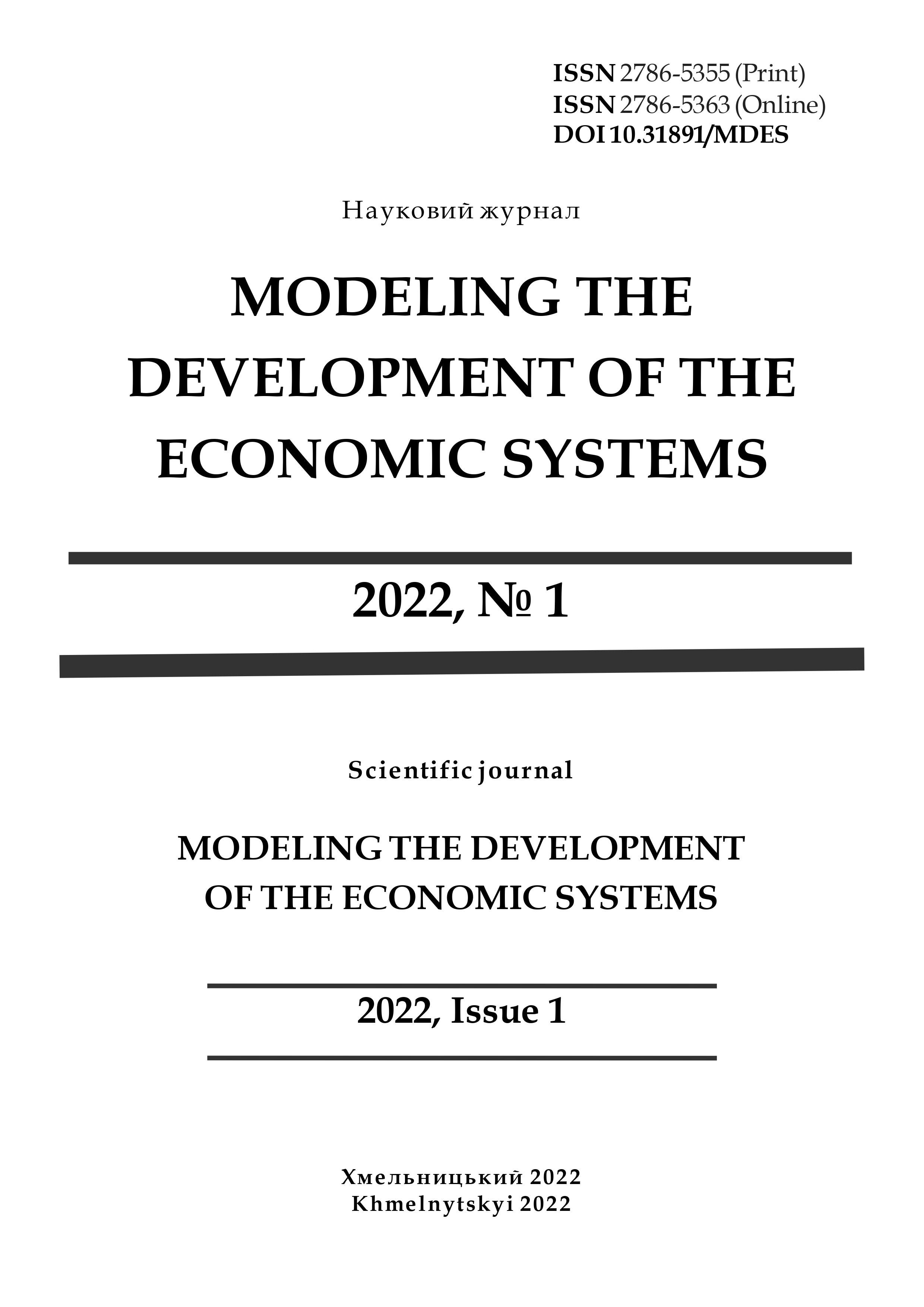BUSINESS MODELING OF ENTERPRISE DEVELOPMENT: STRATEGIC ASPECTS
DOI:
https://doi.org/10.31891/mdes/2022-3-16Keywords:
business model, business modeling, strategic development plan, regulatory and methodological support, business strategyAbstract
The purpose of the study is to substantiate the strategic parameters of development and implementation of business models of enterprise development.
The study reveals the relevance of the problem of formation of theoretical and methodological principles and development of methodological and applied aspects of business modeling of enterprise development. Theoretical and conceptual principles and strategic aspects of business modeling of enterprise development are generalized. An algorithm for forming the optimal capital structure of the strategic development of the enterprise has been developed. The technological process of formation of the business model of strategic development of the researched enterprise is established and the algorithm of formation and realization of strategy of development of production and economic activity of the business subject is developed.
It is shown that the current practice of strategic planning shows that the process of planning the strategy of enterprise development is incomplete without the development of a specific business model of strategic business development. At the same time, technologies and innovations that are not based on effective business models are no longer a viable approach to ensure the development of today's efficient enterprises in today's complex and dynamic conditions of the external environment and internal business environment.
The specific applied value of the research results is that an alternative scheme of portfolio analysis of the enterprise business system has been developed. It is substantiated that the analyzed enterprise needs to change the strategic position of Business Unit 1 - the most popular types of building materials (demand for which is stable for many years and sold in the largest volumes), and in particular move to a segment characterized by a wide portfolio geographical coverage. Regarding Business Unit 2 - construction and repair and design services, the demand for which is increasing - the company needs to move to a segment characterized by a specialized portfolio of services and a narrow geographical coverage.
The scientific significance of the research results lies in the substantiation of methodological and applied provisions for determining promising areas and means of development of business units and strategic areas of management in business.
References
Alekseyeva, M. M. (2011). Company activity planning]: textbook. way. Kyiv: Finansi i statistika, 248 p.
Arapova, O. M. (2013). Using a business plan to increase the efficiency of foreign economic activity of the enterprise. Economics: the realities of time, no. 1, pp. 71–75.
Vasilyuk, V. V. (2014). Business planning as a tool for food production cost management. Modeling of regional economy. no. 1, pp. 218–224.
Vasyltsiv, T. G., Yaroshko О. R. (2018). Financial security of the enterprise: place in the system of economic security and priorities of strengthening at the post-crisis stage of economic development. Scientific Bulletin of LTEU of Ukraine. Vol. 21.2. pp. 132-136.
Danik, N. V. (2015) Business planning as a tool for financial management in modern conditions of development of Ukraine. Scientific Bulletin of Uzhgorod National University. Series: International Economic Relations and the World Economy. Vol. 2, pp. 81–84.
Danchenko, O. B. (2014). Review of modern risk management methodologies in projects. Project management and production development. vol.1(49). URL : http://www.irbis-nbuv.gov.ua/cgi-
bin/irbis_nbuv/cgiirbis_64.exe?C21COM=2&I21DBN=UJRN&P21DBN=UJRN&IMAGE_FILE_DOWNLOAD=1&Image_file_name=PDF/Uprv_2014_1_4.pdf.
Jella, A. N. (2012). Strategic planning of the enterprise. Actual problems of economy, pp. 38–46.
Zubko, T. L. (2016). Assessment of the level of economic security of the enterprise in the field of communications. Economy. Management. Business. Vol. 3. pp. 81-88.
Lupak, R. L., Didych, А. М. (2017). Economic bases of ensuring the competitiveness of the enterprise in market relations. Scientific Bulletin of LTEU of Ukraine. Vol. 20.6. pp. 248-252.
Karpov, V. A. (2014) Planning and analysis of business projects. Odessa: ONEU, 218 p.
Katorzhin, A. D. (2013). Development of business plan of the investment project. Development Management. Vol. 16, p. 109.
Kvasha, O. S. (2014). Features of business planning in the organization, pp. 81–85.
Losyeva, H. G. (2012). Business planning reengineering as a process of improving the competitiveness of the enterprise. Economy and state, no. 2, pp. 101–102.
Mamchyn, R. O. (2011). Theoretical principles of business planning in trade business. URL: http://ena.lp.edu.ua:8080/bitstream/ntb/13851/1/31_203-210_Vis_720_Menegment.pdf.
Cherep, A. V. (2012). Methodological approaches to assessing the competitiveness of enterprises. Innovative economy. Vol. 8 (34). pp. 77-79.
Chumak, L. F. and Harkava, L. V. (2013). Key aspects of the competitiveness of enterprises. Biznes Inform. Vol. 1. pp. 212-215.
Vasyltsiv, T. G., Lupak, R. L., Kunytska-Iliash, M. V. Strategic approaches to the effective use of intangible assets as a condition for strengthening the competitiveness of enterprise. Scientific Bulletin of Polissya. № 2 (14). pp. 8-15.




